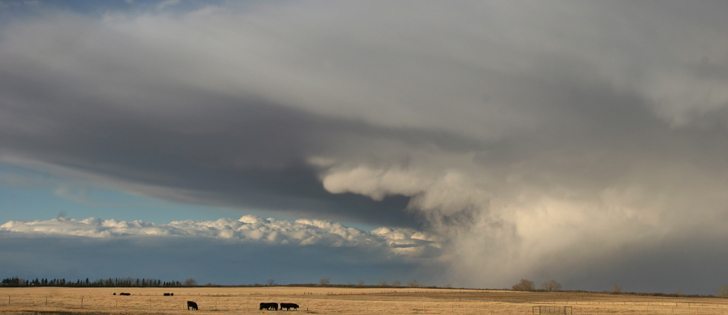Wind, hail, tornadoes | Expert says when various climatic conditions come together a storm can escalate quickly
Armchair weathermen trying to stay ahead of the summer storm season are advised to listen for warnings and keep an eye on the sky.
Like any seasonal forecast, springtime predictions about summer storms on the Prairies are best taken with a grain of salt, says John Cragg, Environment Canada’s new weather preparedness meteorologist in Saskatchewan.
Moist and dry air masses clash over the Prairies’ flat terrain, providing fertile ground for extreme weather events from mid-June through August.
Saskatchewan led the prairie provinces from 1999-2011 with an average of 85 severe hail, wind, tornado and rainfall events per year.
Read Also

Chinese, Indian tariffs take toll on pea prices
The disruption of pea exports from Canada’s largest customers will likely result in slow pea exports for the remainder of the crop year.
“So typically, it’s a pretty bad year every year,” said Cragg.
“There’s a lot of events across the province. A lot of people get affected.”
Cragg said Environment Canada’s season forecast for last winter called for cooler than normal temperatures, but that forecast was later adjusted to reflect one of the mildest winters in memory.
Likewise, warmer temperatures through the springtime might not necessarily mean a prolonged storm season. He said conditions have to be perfect to trigger an event, and events escalate quickly.
“A lot of thunderstorms are chance,” he said.
Environment Canada tries to issue thunderstorm watches three to six hours ahead of time during the summer, with a 30 minute lead time for the more serious thunderstorm warning.
With tornadoes, which typically develop in the late afternoon and evening, a warning might be issued with as little as 10 to 20 minutes of notice.
“We’re doing good if we get a tornado warning out in that time period. They’re hard to detect,” said Cragg.
“It’s hard to know when they’re going to happen. That’s a pretty good time frame.”
Earlier this year, the federal government announced $78.7 million in funding over the next five years to upgrade Environment Canada’s weather monitoring infrastructure.
The prairie provinces are likely to see several tornados over the summer months, bringing 100 km/h and higher winds, but other events such as straight-line winds that can accompany a thunderstorm are much more common, cover a larger area and are “more persistent.”
“If somebody’s barn gets blown down, property gets damaged, they want to know that it was a tornado,” said Cragg.
“That’s more exciting.”















